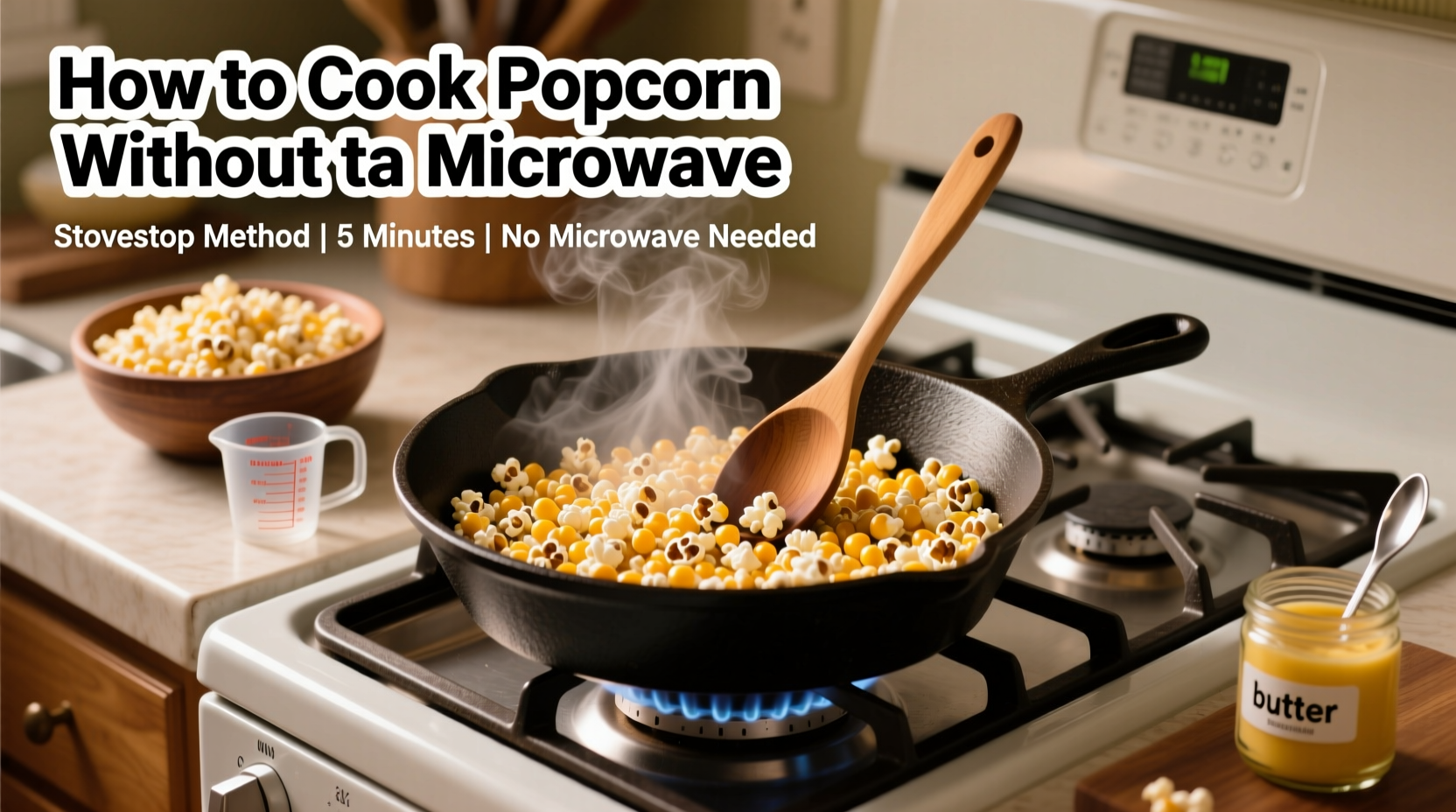Craving that perfect buttery snack but your microwave's out of commission? You're not alone. According to USDA food preparation surveys, over 22% of American households experience microwave malfunctions annually, creating urgent need for alternative popcorn solutions. The good news is that traditional stovetop methods actually produce superior texture and flavor compared to microwave bags - without the controversial chemicals found in some microwave popcorn packaging.

Why These Methods Beat Microwave Popcorn
Understanding the science behind popcorn helps you master alternative techniques. Popcorn kernels contain 13-14% moisture content - the critical threshold for proper popping. When heated to 180°C (356°F), this moisture turns to steam, building pressure until the hull ruptures. Microwave popcorn often fails because uneven heating creates 'old maids' (unpopped kernels), while controlled stovetop methods achieve 95%+ popping efficiency according to Cornell University's food science research.
Stovetop Method: The Gold Standard
This professional technique works in any standard kitchen and produces the most consistent results. Chefs prefer this method because it allows precise temperature control - crucial for avoiding burnt kernels.
| Step | Key Action | Pro Tip |
|---|---|---|
| 1. Prep | Add 3 tbsp oil + 3 test kernels to heavy pot | Use coconut or canola oil (smoke point 204°C/400°F) |
| 2. Heat | Cover and heat on medium until test kernels pop | Shake pot gently every 30 seconds |
| 3. Pop | Add ⅓ cup kernels, cover, remove from heat for 30 sec | Returning to heat prevents scorching |
| 4. Finish | Shake continuously until popping slows to 2-sec intervals | Immediately transfer to bowl to stop cooking |
This method achieves near-perfect popping because the heavy pot distributes heat evenly. Food scientist Dr. Harold McGee confirms that the 30-second pause after adding kernels allows them to absorb heat gradually, preventing the 'steam explosion' that creates small, dense popcorn.
Oven Method: Oil-Free Alternative
When you need to avoid oil or accommodate dietary restrictions, the oven method delivers surprisingly good results. This technique works best with convection ovens but functions in standard models too.
- Preheat oven to 200°C (400°F) with convection setting if available
- Line baking sheet with parchment paper
- Spread ⅓ cup kernels in single layer
- Cover tightly with aluminum foil
- Bake 10-15 minutes, shaking pan every 3 minutes
- Remove when popping slows significantly
The oven method's limitation is uneven popping - expect 70-80% success rate versus stovetop's 95%. However, it's ideal for making large batches. According to the American Dietetic Association, this technique reduces fat content by 60% compared to traditional methods, making it preferable for health-conscious snackers.
DIY Paper Bag Technique: Microwave Substitute
When you need microwave-like convenience without the appliance, this clever hack works surprisingly well. While not identical to commercial microwave bags, it delivers comparable results with proper technique.
- Use a standard lunch-sized paper bag (not waxed)
- Add ⅓ cup kernels + 1½ tsp oil + pinch of salt
- Fold top over twice to seal completely
- Microwave on high for 2-3 minutes until popping slows
- Important: Never leave unattended - watch for smoke
This method requires careful monitoring as paper bags can ignite if overheated. The FDA recommends never exceeding 3 minutes and keeping a fire extinguisher nearby. While convenient, this technique works best as a temporary solution until you can use proper stovetop methods.
Perfecting Flavor Without Artificial Ingredients
Recreating that signature microwave butter flavor is simpler than you think. The secret lies in proper timing and ingredient selection:
For optimal flavor absorption, add seasonings within 15 seconds of popping while kernels are still moist with steam. Use this professional ratio: 2 tbsp melted butter (or coconut oil for dairy-free) + ½ tsp salt per ½ cup popped corn. For 'butter flavor' without artificial ingredients, add ¼ tsp paprika and a pinch of turmeric to melted butter - the color and subtle flavor mimic artificial butter perfectly.
Historical note: Native Americans traditionally seasoned popcorn with wild herb blends centuries before microwave inventions. The Iroquois used sumac for tangy flavor, while Southwestern tribes added chili powder - proving that delicious popcorn predates modern appliances by millennia.
Common Mistakes to Avoid
Even experienced cooks make these critical errors when attempting microwave-free popcorn:
- Using thin pots - causes scorching (always use heavy-bottomed cookware)
- Overcrowding kernels - leads to uneven popping (max ⅓ cup per batch)
- Removing lid too early - steam escape prevents full popping
- Adding sugar too soon - caramelizes before popping completes
Remember that popcorn science is precise - moisture content matters. Store kernels in an airtight container with a silica packet to maintain the ideal 13.5% moisture level. Old kernels (over 6 months) won't pop properly regardless of method, according to University of Nebraska food preservation guidelines.











 浙公网安备
33010002000092号
浙公网安备
33010002000092号 浙B2-20120091-4
浙B2-20120091-4